When new games are announced I often take a look at who is the designer of the game to get an idea of what the game may be like. If it’s one of the designers on this list, I’m certainly going to be taking a very close look at their newest creations.
As with everything, this is my personal list and as such, is a bit biased toward heavier Euro-style games. I have a huge appreciation for the design of folks like Corey Konieczka but ultimately they aren’t the games I play as often.
I wanted to highlight designers who really hit the mark consistently with their designs. So, I’ve rated designers with a few games which I love higher than those that put out a lot of volume and while some are great, others may fall short. In short, it’s quality over quantity.
Top 10 Board Game Designers
10. Jamey Stegmaier
 Viticulture has been one of my favorite games since I first played it a few years ago. While it stays true to the roots of a worker placement game, it has a few wrinkles that add to the depth of the game, without adding much overhead to learning. Jamey’s success continued this year with Scythe, a 4X game with beautiful production and interesting gameplay.
Viticulture has been one of my favorite games since I first played it a few years ago. While it stays true to the roots of a worker placement game, it has a few wrinkles that add to the depth of the game, without adding much overhead to learning. Jamey’s success continued this year with Scythe, a 4X game with beautiful production and interesting gameplay.
9. Matt Leacock
 Pandemic has transformed the board gaming hobby. The simple-to-learn design can be found in almost any big-box store and has helped to introduce countless people into the board gaming hobby. It, along with similarly designs like Forbidden Desert and Forbidden Island, have introduced gamers to the world of cooperative board games.
Pandemic has transformed the board gaming hobby. The simple-to-learn design can be found in almost any big-box store and has helped to introduce countless people into the board gaming hobby. It, along with similarly designs like Forbidden Desert and Forbidden Island, have introduced gamers to the world of cooperative board games.
Another transformation is underway as board games are starting to focus on campaigns and recurring stories. Pandemic: Legacy, co-designed with Rob Daviau, was the breakout hit that really got the phenomenon off the ground.
8. Richard Garfield
 Magic: The Gathering is an interesting case purely in how it continues to be designed and evolved from the Alpha set initially designed by Richard Garfield in 1993. However, the general structure of the game hasn’t changed in a dramatic way and you can still play the game today with brand new cards mixed with cards designed almost 25 years ago. It’s clearly one of the most ingenious game systems ever created.
Magic: The Gathering is an interesting case purely in how it continues to be designed and evolved from the Alpha set initially designed by Richard Garfield in 1993. However, the general structure of the game hasn’t changed in a dramatic way and you can still play the game today with brand new cards mixed with cards designed almost 25 years ago. It’s clearly one of the most ingenious game systems ever created.
In addition to Magic, Richard designed Netrunner, probably the 2nd biggest competitive card game outside of Magic. And a number of board games like Robo Rally and King of Tokyo. King of Tokyo is one of the best gateway level games and is still something I play with kids and family today.
7. Stefan Feld
 Feld games may be some of the most divisive games in the hobby. Often described as “point salad,” when playing a Feld game you almost certainly move some cubes around and score a few points every turn. Despite many of his games scoring in similar ways, they all feel a bit different and have their own unique twist.
Feld games may be some of the most divisive games in the hobby. Often described as “point salad,” when playing a Feld game you almost certainly move some cubes around and score a few points every turn. Despite many of his games scoring in similar ways, they all feel a bit different and have their own unique twist.
Castles of Burgundy is the most popular Feld title and it still one of the best games ever. It’s tighter and easy to learn with a ton of interesting choices for players to make throughout the game. Stefan continues to create new games including the recently released Oracle of Delphi.
6. Antoine Bauza
 If you have a friend that is new to the hobby and asks for board game suggestions, its almost a guarantee a couple of them will be Antoine Bauza designs. 7 Wonders (and its many expansions) has long been a staple of most gamer’s libraries. Other Bauza designs include Hanabi, Tokaido, and the incredibly frustrating (yet fun) coop Ghost Stories. Of course Bauza’s newest hit is the 2-player only take on 7 Wonders, 7 Wonders: Duel which he co-designed with fellow veteran game designer Bruno Cathala.
If you have a friend that is new to the hobby and asks for board game suggestions, its almost a guarantee a couple of them will be Antoine Bauza designs. 7 Wonders (and its many expansions) has long been a staple of most gamer’s libraries. Other Bauza designs include Hanabi, Tokaido, and the incredibly frustrating (yet fun) coop Ghost Stories. Of course Bauza’s newest hit is the 2-player only take on 7 Wonders, 7 Wonders: Duel which he co-designed with fellow veteran game designer Bruno Cathala.
5. Uwe Rosenberg
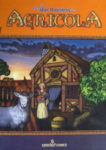 Uwe is best known for his weighty worker placements games like Agricola, Caverna, Le Havre, and A Feast for Odin. These aren’t necessarily straightforward designs; Feast for Odin has 61 different spots you can place a worker. But they offer depth of strategy and replay value.
Uwe is best known for his weighty worker placements games like Agricola, Caverna, Le Havre, and A Feast for Odin. These aren’t necessarily straightforward designs; Feast for Odin has 61 different spots you can place a worker. But they offer depth of strategy and replay value.
However, looking just past those huge box games, there are some lighter Rosenberg designs that are just as engaging. Cottage Garden and Patchwork have started a bit of a craze with games featuring Tetris-shaped pieces. And a whole family of Bohnanza games about bean farming. These games are much lighter but still timeless designs.
4. Eric Lang
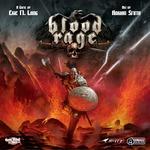 Recently hired by CMON to design and develop games exclusively, Eric Lang’s recent titles have been some of the biggest games on Kickstarter in recent years. Blood Rage earned almost a million dollars back in 2015. Based at least partly on the great reception of Blood Rage, Eric’s upcoming Rising Sun raised over 4 million.
Recently hired by CMON to design and develop games exclusively, Eric Lang’s recent titles have been some of the biggest games on Kickstarter in recent years. Blood Rage earned almost a million dollars back in 2015. Based at least partly on the great reception of Blood Rage, Eric’s upcoming Rising Sun raised over 4 million.
For me, many of these games still keep a few strategy game elements to go along with great theme and production. Eric’s ability to toe the line between euro games and ameristyle make him unique among other designers in the hobby. In addition to his big box games, Eric has also co-designed Dice Masters and many smaller games including the criminally under-the-radar Bloodborne: The Card Game.
3. Bruno Cathala
 It’s difficult to pick which of Bruno Cathala’s designers credits to highlight. He certainly puts out a lot of volume but manages to rarely drop the ball with a subpar design. Bruno designs include the classics Shadows over Camelot and Mr. Jack. And of course, the previously mentioned co-design of 7 Wonders Duel with Antione Bauza.
It’s difficult to pick which of Bruno Cathala’s designers credits to highlight. He certainly puts out a lot of volume but manages to rarely drop the ball with a subpar design. Bruno designs include the classics Shadows over Camelot and Mr. Jack. And of course, the previously mentioned co-design of 7 Wonders Duel with Antione Bauza.
Five Tribes, released by Days of Wonder in 2014, has been one of the most played games in my collection since I’ve owned it and own of the best Cathala designs. It takes a traditional game like Mancala and adds elements around it to make for an interesting strategic board game.
Bruno Cathala games aren’t necessarily always heavy strategy games though. In the past year, he has released Dice Stars, one of the best roll-and-writes to date, and Kingdomino, a Spiel des Jahres winning tile laying game.
2. Jeroen Doumen & Joris Wiersinga
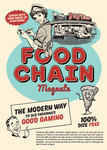 Jeroen and Joris design and publish games as Splotter Spellen in the Netherlands. Food Chain Magnate, released in 2015, has been their greatest commercial success. Their other titles include Indonesia, Roads and Boats, The Great Zimbabwe, and Antiquity.
Jeroen and Joris design and publish games as Splotter Spellen in the Netherlands. Food Chain Magnate, released in 2015, has been their greatest commercial success. Their other titles include Indonesia, Roads and Boats, The Great Zimbabwe, and Antiquity.
The best thing about my experience with Splotter games are how simple the rulesets are. For some of my favorite euro games it isn’t unheard of to take 45 minutes or an hour explaining how the game works. That just isn’t the case with most Splotter titles; you can be up and running in less than 20 minutes.
That, of course, doesn’t mean they are easy. Splotter games are unique in that there is little or no random element within the game. You are free to fail or succeed without being able to point to a bad card draw or unlucky dice roll. It is a testament to the great designs from Jeroen and Joris that a simple to learn game can take so long to master.
1. Vital Lacerda
 Unlike some of the others above, it’s very easy to list out all of the Vital Lacerda designs. CO2, Vinhos, The Gallerist, Kanban and Lisboa. However, playing a game designed by Vital is unlike most other board games. They are, without question, euro games, yet incorporate theme in a way that draws you into the game and really makes the mechanics of the game make sense.
Unlike some of the others above, it’s very easy to list out all of the Vital Lacerda designs. CO2, Vinhos, The Gallerist, Kanban and Lisboa. However, playing a game designed by Vital is unlike most other board games. They are, without question, euro games, yet incorporate theme in a way that draws you into the game and really makes the mechanics of the game make sense.
Vital designs also seem to be incredibly balanced. There are often many different options for scoring points and there isn’t a dominant strategy. Each game plays out differently because the actions other players are taking will certainly change what the best option for you is. It’s a fine mix of tactics and strategy.







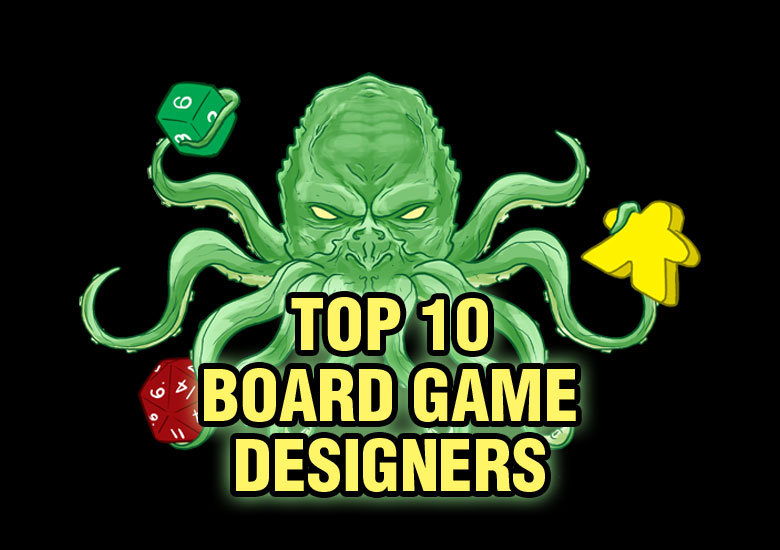


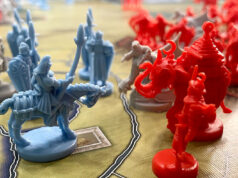











The order of the Top 5 surprised me.
To each his own, but if you omit Knizia and Kramer I suspect you haven’t been in boardgaming long enough to make such a list 🙂
Knowing Andrew personally, I can attest that he has been playing modern board games for quite a while and has played games by both Knizia and Kramer. You might get a more informed response if you ask why he didn’t include them, some of that answer is in the introduction to the list.
No Alexander Pfister and no Knizia, no top 10… just opinion…
Knizia has a lot of games, some of them really stink. There are great ones too, but as mentioned, quality over quantity.
Pfister is probably one of the designers I’d love to play more of their games. I’ve only played Mombasa once and haven’t had a chance to play GWT yet. But he certainly is in the discussion.
The reality is there are way more than 10 great designers and if you want to make a list you have to cut someone from somewhere.
Knizia has made a lot of children’s games. As a father, I appreciate games that are suitable for children, but with subtle points that make it less boring for adults. He has also made a lot of games aimed at the mass market. Again, they are simple, but usually with some subtle points. From a gamer’s point of view, the “stink”, but they are not aimed a gamers.
no vlaada is just criminal
Cool to see Jamey Stegmaier with his name amongst the all-time greats, and rightfully so.
I too must say I was a bit surprised by the top designers, specifically the top 3. Guess that means I have some new board games I need to play!
Overall though, a very solid list in my opinion! Especially considering what a bold thing to create a top 10 list for, you are braver than I! 🙂
Though I have to say I am a big Knizia as well. We love some of his titles like Ingenious and Money that don’t always get a lot of notoriety.
Re Knizia vs Feld. I love to see people give lists like this on the net, I have to say though that I think your ‘quality over quantity’ criteria really fails Reiner Knizia, but interestingly not the even-more prolific Stefan Feld. Knizia’s had a long (and longer) career of about 25 years and has made around as many games. From a quick glance at his bgg profile you can see that at least half of them are well-known with top reviews and great reps. He seems to release a couple of top quality ones then maybe one that is less well-received (eg Keltis), but do that many really stink?
Re his more recent stuff… I’ve just watched a review of Indigo and it looks marvelous (I’ve actually been looklng out for his FITS – a generic Tetris type game of a type I like). OK, neither of those were probably huge hits – and he possibly hasn’t had a really big one in a while – but so what? I’d wager that some of the games mentioned in your top 10 weren’t that massive either. It’s such a big market now that top games can easily pass people by. I think his most recent games (some possibly released since your list was made) have either been well-received (eg Quest of El Dorado) or seem to be kid’s games, which if they are are notoriously hard to make ‘great’ games out of.
At a game a year he’s prolific, it’s as simple as that. But in game consistency (including the odd re-hash etc) I don’t see how he is all that different from Feld, who as I write, has now released about 30 games in around 14 years! Many might say Knizia is even more consistent in terms of actual game quality, if maybe not in style of game (which big Feld fans obviously appreciate particularly, so they’d likely disagree on this).
Steve Jackson? Munchkin is huge…
really loved the way information is been shared here.
Are you guys refering to Corey Konieczka? His name is being butchered!
I love Vital Lacerda’s Lisboa board game very much, its theme comes through very strongly.
You really feel like you are rebuilding the city, and all of the rules make sense in that context.